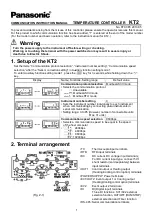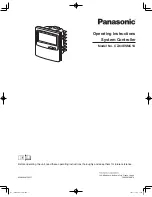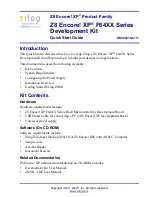
54
6250 Servo Controller User Guide
Dithering Hydraulic Valves
Dither is a square-wave signal added to the control output and is used to keep the hydraulic
valve moving slightly for the purpose of reducing stiction (see illustration below). Two
commands are used to select the amplitude and frequency of the dither signal—
SDTAMP
and
SDTFR
.
TBD -- Illustration of dither square wave and amplitude/frequency.
☞
Refer to Step 2 in the
Controller Tuning
Procedure
in Chapter 4
for a discussion on the
servo update rate.
The
SDTAMP
command selects the amplitude of the dither signal in peak-to-peak volts (see
illustration). The
SDTFR
command selects the frequency ratio of the dither. The rate is a
multiple of the servo update rate which is set with the
SSFR
command. If the
SDTFR
ratio is
60, then a positive voltage (
SDTAMP
) is added during 30 servo updates and a negative voltage
is added during the next 30 servo updates ((rewrite as in S/W reference description)).
User Interface Options
The following are the three basic user interface options for controlling the 6250:
Stand-alone operation: After defining and storing 6250 programs with a RS-232C terminal,
you can operate the 6250 as a stand-alone controller. A program stored in the 6250 may
interactively prompt the user for input as part of the program (via programmable I/O,
thumbwheels, an RP240, or an RS-232C terminal).
PLC interface: The 6250's programmable I/O may be connected to most PLCs. The PLC
typically executes programs, loads data, and manipulates inputs to the 6250. The PLC
instructs the 6250 to perform the motion segment of a total machine process.
Host computer operation: A computer may be used to control a motion or machine process.
A PC can monitor processes and orchestrate motion by sending motion commands to the
6250 or by executing motion programs already stored in the 6250. This control might
come from a BASIC or C program.
Of course, you can use any one, or combination, of these options in your application. Some
application examples are provided below. The sections below discuss programmable I/O
(including thumbwheel and PLC interfacing), the RP240 interface, host computer interfacing,
stored programs, and other aspects of the 6250 that allow the user to apply the 6250 in the
variety of interface options as noted.
User Interface Option
Application Example
















































